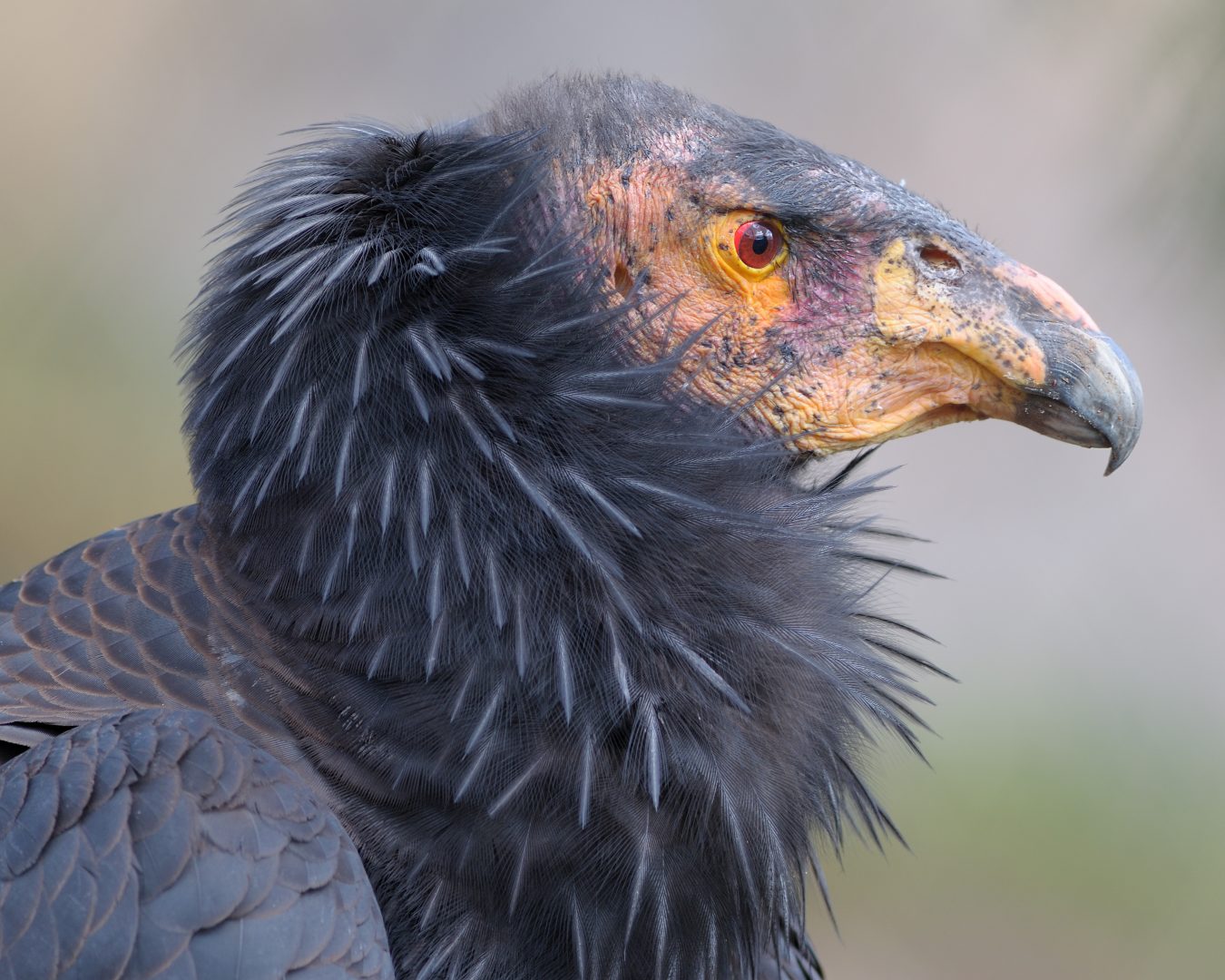
The California condor (Gymnogyps californianus) is an endangered New World vulture and the largest bird in North America. In the 1980s, the entire population of California condors was reduced to 22 birds. With the assistance of captive breeding programs, the condor was brought back from the brink of extinction. Captive-bred birds have been reintroduced to California, Arizona, Utah, and Baja California. There were more than 230 condors in the wild in 2013, but the bird’s recovery has been sluggish.
The extremely slow reproductive rate, usually one egg per clutch, and the fact that females don’t nest every year, prevents condor numbers from booming. Young condors are dependent upon their parents for as much as a year and can take 6 to 8 years to mature.
The Impact of Lead on Condor Reproduction
In addition to a slow reproductive rate, the condor’s susceptibility to lead poisoning caused by ingesting lead ammunition fragments, is a major impediment to establishing a viable wild population. Lead impairs the stress response, and elevated stress is known to interfere with avian reproduction.
In 2010, the Peregrine Fund reported that 72 percent of condors captured in Arizona had lead in their blood. Of this number, 34 birds were treated by chelation, a technique for removing heavy metals from the blood. To mitigate lead poisoning in reintroduced condors, each bird is recaptured two times a year and tested for blood lead levels. If a condor tests high for lead, a chelation treatment is warranted.
Research Progress
In 2014, Western National Parks Association awarded a grant to scientists from the University of California Santa Cruz to help fund a study of the stress response in chronically lead-exposed condors and the associated effects on reproductive success. This study is being conducted under the auspices of the condor program at Pinnacles National Park in central California where park officials are currently managing about 25 free-flying condors.
Graduate student Zeka Kuspa, working under the supervision of UC Santa Cruz Professor Donald Smith, along with toxicologist and Adjunct Professor Myra Finkelstein, is examining condor fecal samples for elevated stress hormones in captive condors over a 24-hour period following a routine capture and handling event. After establishing a baseline for stress hormones in the fecal samples of the recaptured birds, the scientists will compare their findings to stress hormone data from condors with high-lead blood levels.
The data collected by these scientists will increase our understanding of the effect of ingested lead on the stress response and reproductive success of this magnificent, endangered bird.
In September 2014, Kuspa presented her preliminary findings at a joint meeting of the American Ornithologists Union, the Cooper Ornithological Society, and the Society of Canadian Ornithologists. We look forward to the final report on this project.
By Susan Swanberg, assistant professor of journalism at the University of Arizona






